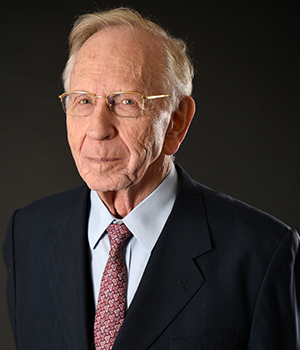
Boris Kalitventzeff
Co-founder & Chairman BELSIM

“The Definition of Innovation”
Belsim was born due to the will of Electricity of France (EDF) to buy the software the research team at the State University of Liège (Belgium) developed as part of the general European efforts to cope with reducing the energy use by the process industry. Belsim works with managers of process plants of different nature: power industry, oil and gas upstream and downstream facilities, fertilizers plants and other energy intensive process plants. “We provide the most complete technical information about operations in quasi-real time so that plant managers can concentrate on optimally operating the plant,” says Boris Kalitventzeff, founder of Belsim. “They get rid of tedious and time-consuming tasks to obtain the needed KPI to properly operate their plant: they focus on more strategic issues. It is rewarding for anyone proud of his company to concentrate on improving operation and reducing costs.”
"Belsim partners with local companies all over the world in order to provide local support and implementations."
Belsim is recognized as a leader in the implementation of the DVR technology. This technology was created owing to necessity. Boris was appointed as a professor in chemical engineering at the University of Liège in Belgium in charge of creating a department “analysis and synthesis of chemical systems”, responsible for teaching the mathematical modeling and optimization of chemical process plants. Creating the DVR concept was the early stage of this scientific responsibility, because from the first plant modelling, Boris did face the existence of erroneous measurements. “Analysis and Synthesis is a methodology that came from my training at the military academy of Belgium, polytechnic division. This has been fundamental for me and for my co-workers” explains Boris. “Early after my appointment in Liège university, to gain in experience of process plants, I started working with the industry”. One of the first plant studies was an ammonia plant, where he did first write a complex model with differential equations, modeling the radiation in the furnace, etc., but was unable to reproduce the measurement data of the front-end of the plant.
Boris innovated without noticing it. What comes in goes out: atoms, mass, energy: these conservation equations were the constraints of a Lagrange optimization formulation. The objective function was the sum of weighted corrections of the measured data. Solving this model resulted in detecting a high inlet flow of steam, twice as much as “measured”. This was “impossible”, “we would know about that”, “if you are right, we can drastically improve the benefit of this plant”. “Therefore, it is impossible”. A young plant manager did propose to check and did demonstrate that Boris was right. It was a first big success. An elementary version of the VALI software was created. A research team has attracted PhD students not only from Belgium. It did apply for the “Pinch Technology” and developed a dedicated software for the “Energy Analysis and Synthesis” of process plants. Answering the pressure of industry, the commercial company Belsim was created, to allow commercialize the technology.
Belsim helps its customers to improve process plant efficiency, reduce energy consumption, limit their environmental impact. It can be stressed that Belsim has long standing cooperation experience with several industries. As an example, Belsim worked on an ammonia plant located in Mons (Belgium). (1) Belsim has first been called to help detecting the root cause of a decrease in production of about 20%. The reason was a steadily increasing leak in the exchanger between the inlet and outlet flows of the synthesis reactor. Not only the loss of production has been avoided but also the cost of excess energy spoiled: indeed, it is well known that the cost of energy to be provided to the synthesis compressor is quite costly because of the very.
low molecular weight of the streams. The company did solve the problem in closing the leaking tubes in 3 days! VALI did remain in operation. (2) Some years later Belsim assisted them to change the synthesis reactors: from longitudinal flow in the catalyst beds to radial flow, in order to diminish the operation cost of the synthesis compressor. (3) Recently Belsim did assist them to study and implement a retrofit of the full plant based on the Pinch technology, to reduce the CO2 produced per ton of product and prepare for the carbon tax that would inevitably apply in the coming years. The production rate has been increased as well to pay the retrofit and so to obtain a high ROI.
For the days to come, Belsim will concentrate on the DVR applications, extending the sales of its master software VALI. As part of the strategy, Belsim will cooperate to implement its DVR technology in cooperation with local engineering companies and will offer its VALI tool to universities teaching process plants knowledge.
“Together with the plant managers, our engineers had fun and enthusiasm to solve diverse problems in diverse plants and to gain experience and deep knowledge of many industrial plants. Our tools have proved to be robust; applications have been proved to be productive. We have complementary capital to grow. We have a talented team at the steer,” adds Boris: CFO Boris Latour, CEO Pascal Leurquin and COO Frédéric Lecoq.

Company
Management
Boris Kalitventzeff
Co-founder & Chairman BELSIM
Description
BELSIM’s mission is to provide solutions to enhance the quality of production and process data. BELSIM thereby is a technology partner as well as a solution provider, and can accompany its customers from proof of concept, over full-scale project implementation, to ongoing support.

